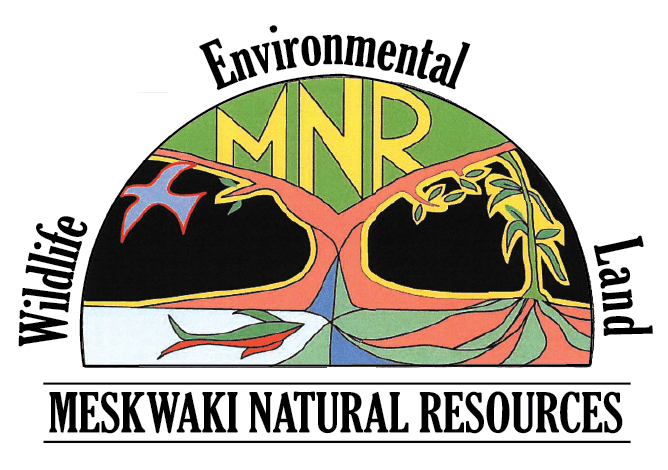
MNR Land Branch
Forestry, grassland, fire, and agriculture are broad programs that comprise the land management aspect of MNR.
Land Management
Fire
The Fire program consists of fire management and fire prevention.
MNR manages both fire prevention and fire management programs. Fire prevention is focused on teaching the community proper fire etiquette to prevent the possibilities of fires getting out of control. Fire management is a tool used to both take care of habitats and reduce the risks of wildfires causing harm to people or structures. Every year, if the weather is right, MNR staff will burn several hundreds of acres in an attempt to restore natural patterns in the habitat and reduce the risk of wildfires. If you have areas that need burned, reach out to MNR staff to request assistance for the next available season of prescribed burning.
Forestry
The Forestry Program includes inventory, planning, development/restoration, and protection of the Meskwaki Forests.
The Meskwaki Settlement is composed of approximately 3,345 acres of forested land. From 2017 to 2020, 1,537 acres were inventoried by MNR staff to collect data on mature trees and regenerative trees that are growing in the understory. Forestry is the most in-depth program in the Land and Wildlife Branch as it is heavily connected to the Tribe’s culture. MNR partners with the Bureau of Indian Affairs to provide support and programs for developing, restoring, and maintaining the current data information on the settlement’s forests.
Grassland
Settlement grasslands include a variety of wild and semi-natural ecological communities adapted to the suite of environmental conditions characteristic to Meskwaki lands, including hydrology (e.g., floodplains, side slopes, uplands), soil types, and historic land management regimes (e.g., fire, grazing, agriculture). In addition to grassland systems dominated by European introductions, such as smooth brome and non-native clovers, the Settlement features a variety of planted (reconstructed) and remnant (relatively undisturbed) tallgrass prairie communities. MNR is responsible for managing and improving these communities for their irreplaceable cultural, ecological, and aesthetic values. The Department implements a variety of interwoven approaches to this end, including managing Conservation Reserve Program (CRP) contracts, maintaining species inventories of Settlement grasslands, and conducting management practices such as prescribed fire, grazing, invasive species management, mowing, and seeding.
Agriculture
Agriculture ground includes conventional crop ground and fields in conservation programs.
Agriculture land encompasses approximately 930 acres of crop land. These fields are managed utilizing conservation techniques to reduce the impacts of runoff and soil erosion. Additional fields that are not cropped are enrolled in a Conservation Reserve Program through the local NRCS office which allows the land to rest, add perennial cover from native grasses, and build nutrients in the soils.
West Bend
West Bend is a property located in Palo Alto County, Iowa, that is owned and managed by the Sac and Fox Tribe.
The Tribe owns a property near West Bend, Iowa, that is commonly called “West Bend.” This property was donated to the Tribe by a couple to allow the Tribe to manage it as a wildlife refuge. The property is roughly 709 acres and runs along the Des Moines River, providing optimal riverine floodplain habitat for wildlife. The property no longer is a productive agriculture property due to its high-risk land from frequent flooding, and instead utilizes conservation programs to provide diverse seeded fields, wildlife cover, and food resources year-round.
Learn More About the MNR Department
Visit our department page to learn more about our different branches and check out our recent projects.
